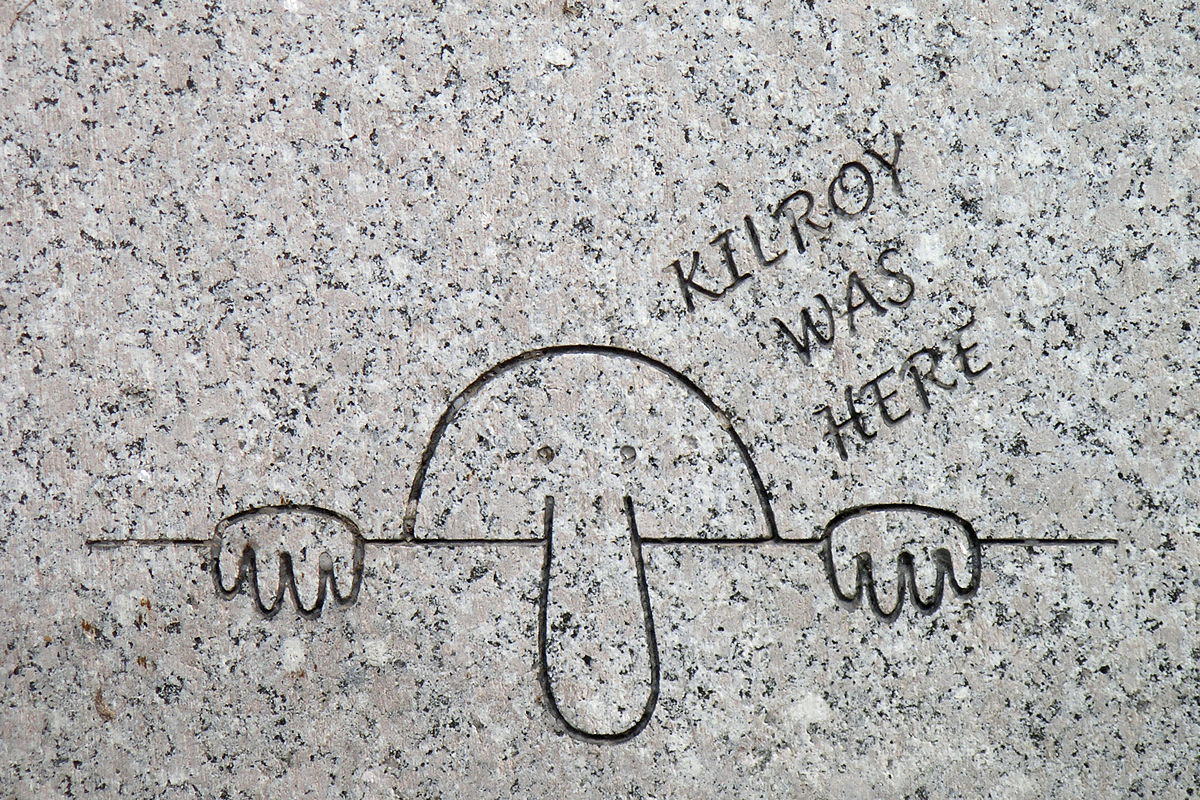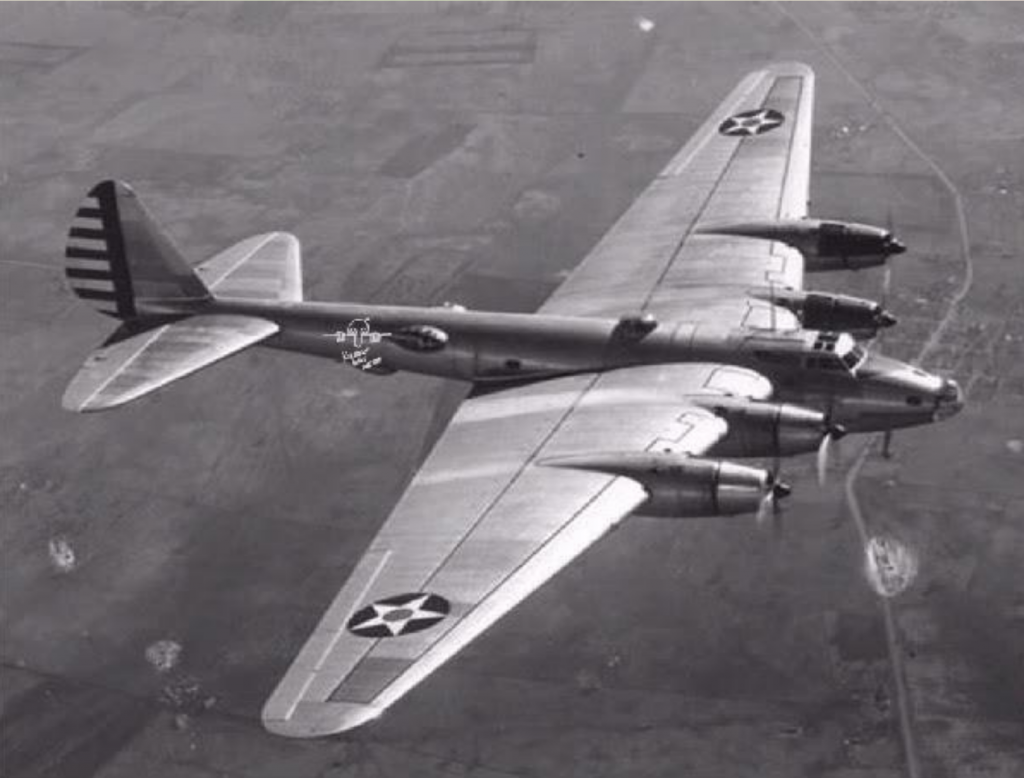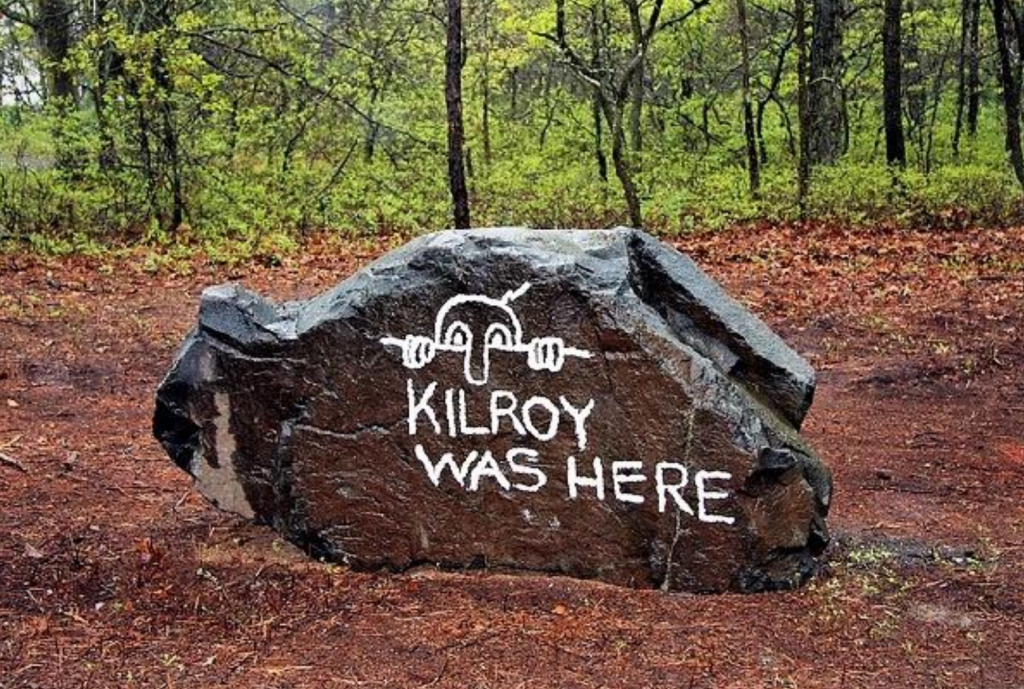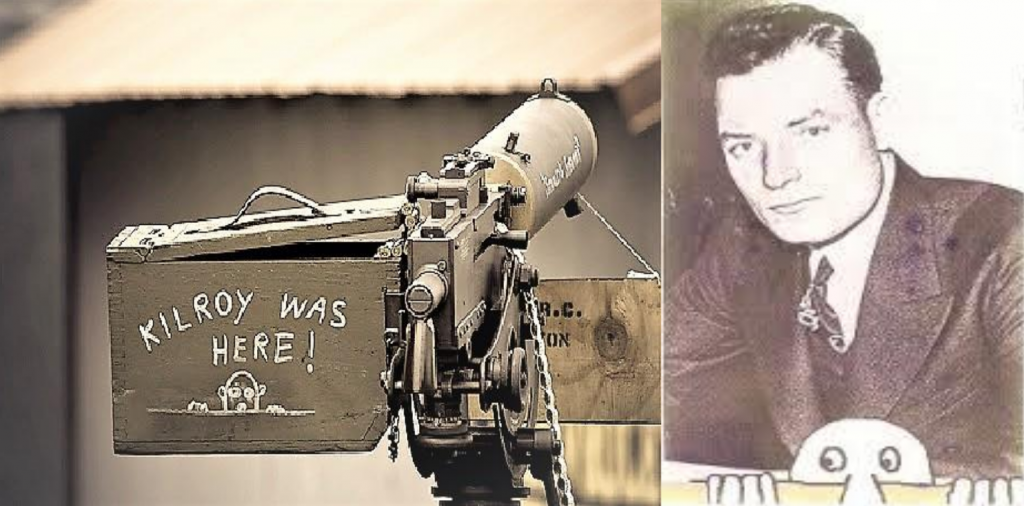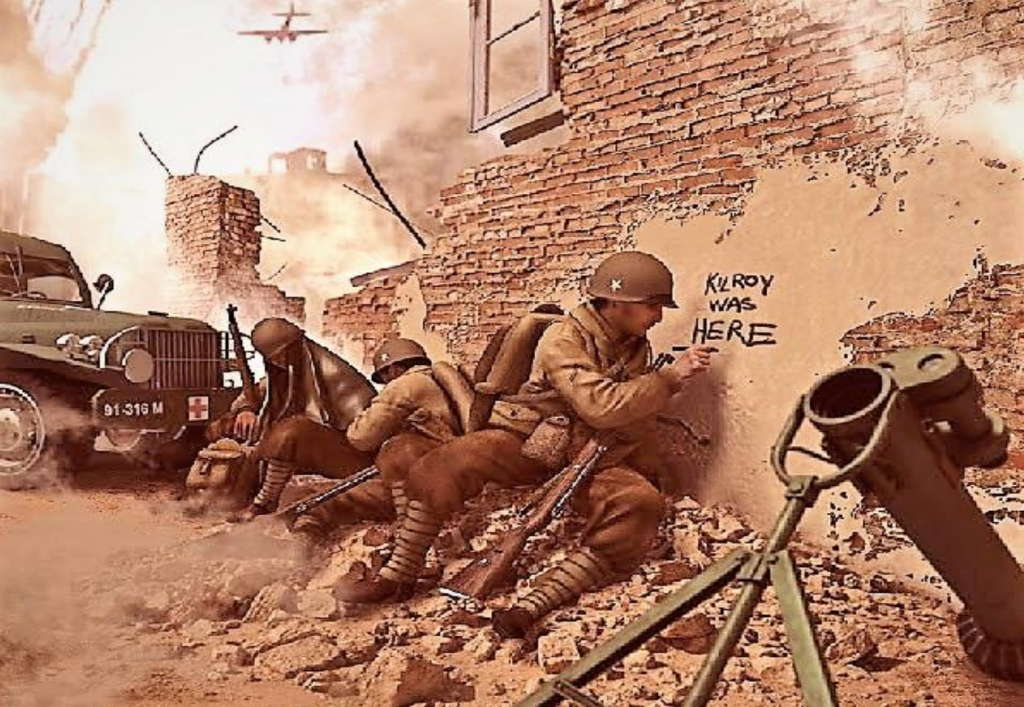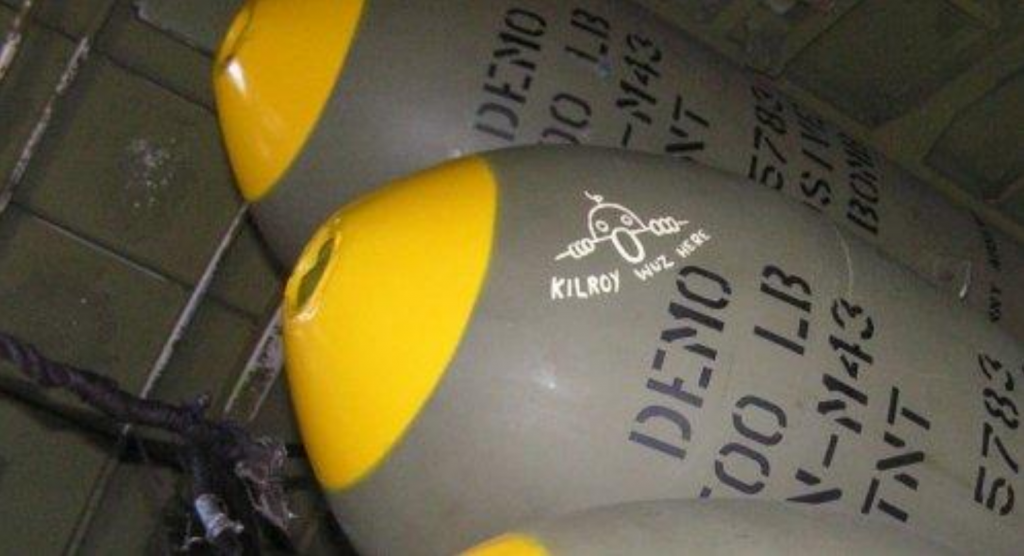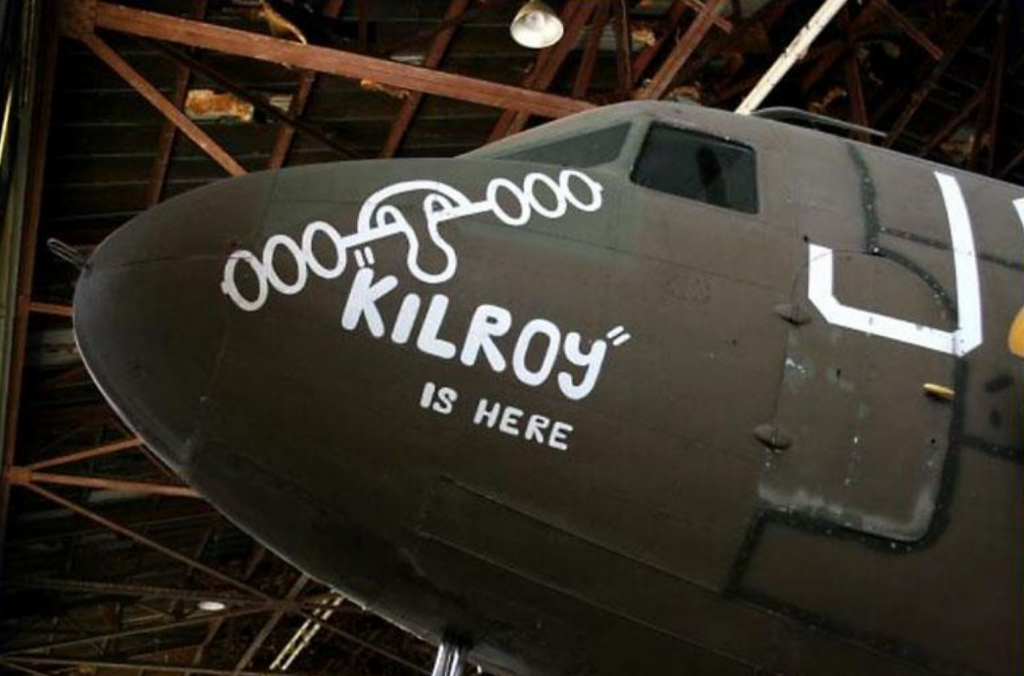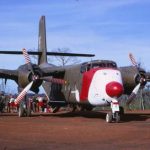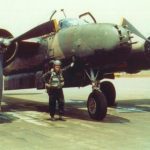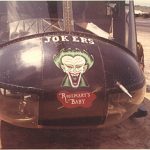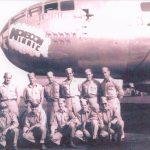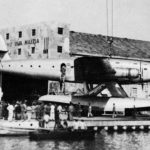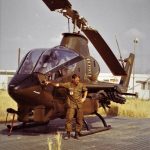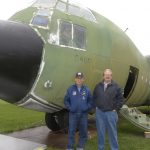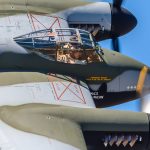‘Kilroy Was Here’ – this iconic doodle with its accompanying phrase became popular graffiti the world over during WWII. While its true origins remain a mystery, and are likely an amalgam of many different caricatures which emerged in various countries in the early 20th century, its final form is often attributed to an American shipyard inspector named James J. Kilroy. Whomever created it though, the humorous artwork quickly gained traction and turned up in all sorts of unusual places. Pete Mecca continues the story for us here…
Every American service member, folks on the home front, and even our enemies knew the guy. He sported an enormous elongated nose, a smooth bald head, a pair of dotty beady eyes, and three to four fingers on each hand dangling over the imaginary line of an imaginary wall. There is no disputing its rib-tickling nature, despite the unfortunate and somewhat ugly visage of the inquisitive little fellow poking his nose over the wall. Kilroy is forever memorialized as one of the iconic symbols of World War II. Kilroy appeared in all theaters of operation and never failed to encourage soldiers or provide them with an immediate chuckle. Sailors, soldiers, flyboys, and marines grew fond of Kilroy and anticipated his appearance in the most unlikely of places. He’d pop up on an ammo box, a large rock, the turret of a Sherman tank, on the fuselage of a B-17 bomber or on the wing of a P-38 Lightning. He hid in the ruins of buildings, emerged on a castle wall, decorated the hull of a ship; Kilroy was everywhere, and, Kilroy was here!
Whether it’s apocryphal or not, legend holds that three of the most powerful men in the world shared the same latrine at the Potsdam Conference in 1945. Apparently, there was an executive privy at the conference, built exclusively for the private use of U.S. President Franklin D. Roosevelt, England’s Prime Minister Winston Churchill, and the Soviet Union’s dictator, Joseph Stalin. The story has it that Stalin was the first who needed to ‘go’. As he emerged from the outhouse, looking slightly baffled, Stalin apparently asked his aide-de-camp, “Who is Kilroy?” Someone had secretly decorated the latrine with the famous graffiti before any of the three men paid a visit!
Kilroy was everywhere! Specially trained Marine recon units and Navy frogmen sneaked onto Japanese-held islands in the Pacific to gather pre-invasion intelligence. On one island a Navy underwater demolition team reportedly discovered Japanese ‘painting over’ a Kilroy logo on a large rock. The question everybody then asked was, “If only Japanese inhabit the island, how did Kilroy get there?”
So, with all of this universal fame and recognition, who in the heck was Kilroy? The creator of ‘Kilroy’ is recognized as James Kilroy of Halifax, Massachusetts. Kilroy was a rivet inspector at the Fore River shipyard in Quincy during the war. He had the responsibility of overseeing the completion of rivets on the massive ships under construction in the yard. Since the riveters were paid by number of rivets they completed, Kilroy would inspect their quality and count them, check-marking a completed block in chalk to prevent double-counts by any unscrupulous workers.
Nice try… as soon as James Kilroy was off duty, riveters would erase his chalk marks so the next duty-checker on shift would unsuspectingly count the same rivets a second time – effectively doubling the riveter’s pay. Questioned by his boss about top-heavy riveter wages, Kilroy made an investigation and determined the cause. His answer was simple – he continued to mark the rivets in the same way, but added “KILROY WAS HERE’ in large letters next to the chalk marks. Later on, he also added the now-celebrated sketch of a bald-headed, beady-eyed man with a hefty proboscis and the apparent DNA of a bleached-out Smurf peering over an imaginary fence.
With the war at full gallop, ships were departing the Fore River shipyard so fast that there was no time to paint over Kilroy’s artwork. His inspection gimmick was seen by thousands upon thousands of soldiers as they boarded these ships for foreign fields. As a result, these odd little caricatures spread like wildfire – ‘KILROY WAS HERE!’ soon appeared on every corner of the earth.
The imaginary Kilroy now became an imaginary hero to the G.I.s. He joined them wherever they went – welcoming the Greatest Generation in North Africa, Sicily and Italy, Europe, the Pacific islands and beyond. Kilroy was a part of our home, part of why we fought – part of the American spirit.
Kilroy’s image was often displayed boldly – but also hidden in strange places, as if the prize in a newly-grownup game of hide and seek. As with many myths, Kilroy’s legend lives on. He is rumored to be on the Statue of Liberty, the underside of the Arc de Triomphe in Paris, atop Mount Everest, and even scribbled in the dust on the moon. Perhaps the most profound recognition of Kilroy comes with the pair of hard-to-find depictions on certain walls of the World War II Memorial in Washington, DC. Indeed WWII veterans often search for their ‘imaginary buddy’ when they visit their Memorial. It’s only natural considering how Kilroy stood by them wherever they fought, wherever they bled… and wherever their human buddies fell.
Kilroy is a veteran too, a member of the Greatest Generation, and now, after completion of the WWII Memorial, he is finally home. Indeed – ‘KILROY IS HERE!’
Pete Mecca is a Vietnam veteran. For story consideration visit his website at VETERANSARTICLE.COM and click on “contact us.”







